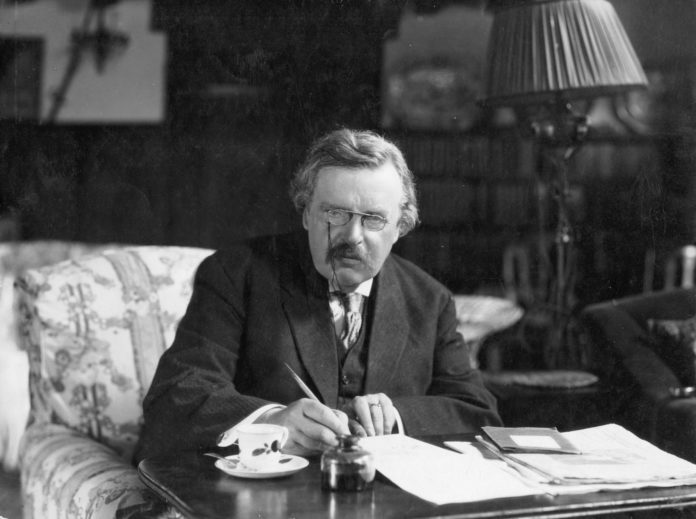|
Audio: Listen to this post | © ClassicBooks.com
|
G. K. Chesterton stands to be counted as one of the most prolific English authors and critics. His works are diversified, involving biographies, novels, essays, verse, and short stories. Probably his popularity grew more thanks to his detective Father Brown who was featured in over 50 stories. Within 36 years, 1900-1936, the author published over 100 books. His biography on St. Francis of Assisi is widely acclaimed for the closeness with which it depicts the Saint’s life. Revered authors and magazines have branded him the prince of paradox. According to Time Magazine, the author adopted a unique writing style, cleverly combining allegories, proverbs, and sayings after deep exploration.
Personal life
Gilbert Keith Chesterton was born on May 29, 1874, in Campden Hill in Kensington. Son to Marie Louise, he was introduced to Christianity at an early age, being baptized at one-month-old at the Church of England. As a young man, he grew fond of the occult.
Chesterton studied at St Paul’s School before joining Slade School of Art to train as an illustrator. Slade was part of the University College of London, where he also took literature classes. However, his education at the university was short-lived as he dropped out to focus on his areas of interest.
Chesterton was a devout family man, getting married to Frances Blogg in 1901. Their marriage lasted until his death on June 14, 1936. In most of his public remarks, Chesterton often alluded to the fact that Frances played the central role in taking him back to Anglicanism. However, he would, later on, describe Anglicanism as being a pale imitation of the Catholic Church. In 1922, he fully became a member of the Catholic Church.
Career
Chesterton officially started his career when he joined Redway, a London publisher, in September 1895. He worked here for about a year before moving to T. Fisher Unwin, a publishing house. He spent a considerable amount of time at Fisher until 1902 after his marriage. This is where he performed his first journalistic work as a literary critic and freelance artist.
He got a weekly column at the Daily News in 1902, followed by another column at London News, where he contributed for 30 years. He also had an opportunity to advance his career in radio when the BBC invited him to give a series of radio talks. These talks gained a lot of popularity as he was allowed to improve them as he saw fit. He delivered an average of 40 talks per year.
Besides just journalism, Chesterton had a strong passion for writing. Throughout his life, he wrote 4000 essays, 200 short stories, hundreds of poems, 80 books, and several plays. A mystery writer, debater, and apologist, Chesterton’s work cut across numerous domains. One of his most notable works is Charles Dickens: A Critical Study, nonfiction which received the broadest-based praise.
His writings and presentations were often filled with wit and humor, allowing him to attract the audience’s attention. He used paradox to comment on serious events of the world, economics, politics, theology, philosophy, government, and many other topics.








